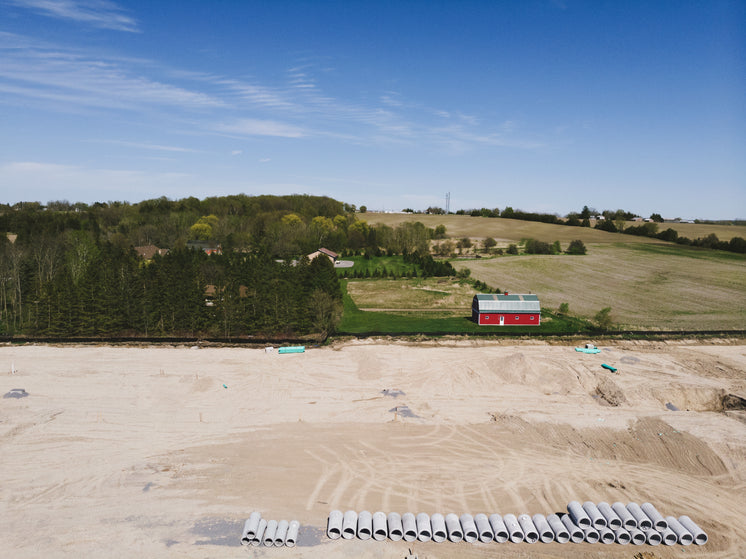The Best Way for a 40 Year Old Male to Gain Muscle Size
- написал: WallaceAllin
- 0
- 0
No matter what your age, it's important to stay fit and healthy. Age-related muscle decline is a common issue, so it's even more important in your later years to focus on building and maintaining muscle. If you're 40 and you're looking to get some big muscle gains, you need the right combination of cardio activity and strength-training exercises, along with a high-protein diet and plenty of rest. Cardio activity is any type of exercise that gets your heart rate going and improves the amount of oxygen in your blood, blasting away calories and helping you shed layers of body fat that sits over your muscle. Brisk walking, transcriu.bnc.cat jogging, running, jumping rope, cycling, rowing and jumping jacks are all excellent forms of cardio for a 40-year-old male. If you're 40 and you want to gain muscle, try holding a dumbbell in each hand when you're performing squats — this builds muscle in your quads, hamstrings and glutes.
 Don't focus on only one area of your body, Prime Boosts Official Website as this can result in «strength imbalances and postural difficulties» among other issues, according to the American Council on Exercise. You'll want to integrate dumbbell curls, rows, flyes and triceps kickbacks, along with pushups, bicycle crunches and planks. The best way for Prime Boosts Pills you to gain muscle is to follow a routine that has you lifting until your muscles fatigue — two or three sets will do the trick. Since it's size you're after, stick to the maximum amount of weight you can handle, with fewer total reps, to build strength and promote maximum muscle gains. To avoid injury, start off with a single set of eight to 12 reps or until fatigue, and gradually work your way up to three sets of 12 reps or two sets of 20 reps for alternating exercises. If you're trying to gain muscle, perform your strength-training workout on Monday, Wednesday and Friday, and your cardio routine — such as 10 minutes of brisk walking, 10 minutes jumping rope, 10 minutes on the rowing machine — on Tuesday, Thursday and Saturday. Protein is essential for the body because it contains amino acids, which are responsible for the strength, repair and rebuilding processes inside your body. Foods that are high in protein, such as lean meats, tofu, eggs, nuts and certain grains are important to include in your diet. If you're not getting enough protein in your diet, you won't get the muscle gains you're after. Talk with your doctor before starting with any new exercises, especially if you have any existing health issues or are dealing with the effects of a past injury. You may also want to work with a fitness professional to discuss your goals and get help creating the most effective, personalized workout plan for yourself.
Don't focus on only one area of your body, Prime Boosts Official Website as this can result in «strength imbalances and postural difficulties» among other issues, according to the American Council on Exercise. You'll want to integrate dumbbell curls, rows, flyes and triceps kickbacks, along with pushups, bicycle crunches and planks. The best way for Prime Boosts Pills you to gain muscle is to follow a routine that has you lifting until your muscles fatigue — two or three sets will do the trick. Since it's size you're after, stick to the maximum amount of weight you can handle, with fewer total reps, to build strength and promote maximum muscle gains. To avoid injury, start off with a single set of eight to 12 reps or until fatigue, and gradually work your way up to three sets of 12 reps or two sets of 20 reps for alternating exercises. If you're trying to gain muscle, perform your strength-training workout on Monday, Wednesday and Friday, and your cardio routine — such as 10 minutes of brisk walking, 10 minutes jumping rope, 10 minutes on the rowing machine — on Tuesday, Thursday and Saturday. Protein is essential for the body because it contains amino acids, which are responsible for the strength, repair and rebuilding processes inside your body. Foods that are high in protein, such as lean meats, tofu, eggs, nuts and certain grains are important to include in your diet. If you're not getting enough protein in your diet, you won't get the muscle gains you're after. Talk with your doctor before starting with any new exercises, especially if you have any existing health issues or are dealing with the effects of a past injury. You may also want to work with a fitness professional to discuss your goals and get help creating the most effective, personalized workout plan for yourself.
Discover how long it takes to get a six-pack and the key lifestyle changes you need to make. Learn why common pitfalls like carbs, booze, and lounging can derail your fitness goals and how to overcome them for a shredded core. Many aspire to one day have six-pack abs, but let’s be real, few have succeeded because carbs, booze, and time are not on your side. But, if we unpack (pun intended) how to obtain that coveted «six-pack,» you’ll find it’s not mission impossible after all. What you really need to know is how long it takes and exactly what behaviors (ahem: endless couch chilling and junk food) you need to kick to the curb. First and foremost, getting a six-pack (or four-pack, or eight-pack if you have great genes) comes down to the amount of body fat you have. Reducing body fat is a necessary step to reveal your chiseled midsection. To lower body fat safely and effectively, it’s important to focus on both diet and exercise.
With everything nutrition and fitness related, there remains one true constant: There is no one-size-fits-all when it comes to achieving a goal. Genetics, body shape, and build always factor into individual results. But seriously, how long does it take to get a six-pack? Your timeline to a six-pack depends on the body fat percentage you’re starting with. A good rule of thumb (and a safe one) is to aim to lose 1 to 2 percent of body fat per month. So, unveiling your abs can take anywhere from 3 months to 2 years. It really does vary. It’s also a good idea to consult a registered dietitian and certified personal trainer or exercise professional before beginning any nutrition and fitness plan. There’s a lot of noise and misinformation in the food and exercise world, and it’s important to be sure you’re on the best plan for your individual needs. For PrimeBoosts.com starters, the ideal body fat percentage to see your midsection muscles pop is 14 to 19 percent for women and 6 to 13 percent for men.
Getting (and staying) below 10 percent body fat may look aesthetically divine (ow ow!), but this takes dedication and discipline. Your body will NOT like being Click here and will likely try every trick in the book to get you to eat more because it thinks you’re starving. It’s also important to note that unless you’re a professional bodybuilder or elite athlete, you don’t need to be below the 10 percent point for your abs to be in view. Some body fat is good. We actually need it to survive. Women naturally require more fat than men. Science points out most of this is due to the hormone estrogen, and to support fertility. Men on the other hand, need less body fat and naturally have more lean muscle tissue (thanks, testosterone
 Don't focus on only one area of your body, Prime Boosts Official Website as this can result in «strength imbalances and postural difficulties» among other issues, according to the American Council on Exercise. You'll want to integrate dumbbell curls, rows, flyes and triceps kickbacks, along with pushups, bicycle crunches and planks. The best way for Prime Boosts Pills you to gain muscle is to follow a routine that has you lifting until your muscles fatigue — two or three sets will do the trick. Since it's size you're after, stick to the maximum amount of weight you can handle, with fewer total reps, to build strength and promote maximum muscle gains. To avoid injury, start off with a single set of eight to 12 reps or until fatigue, and gradually work your way up to three sets of 12 reps or two sets of 20 reps for alternating exercises. If you're trying to gain muscle, perform your strength-training workout on Monday, Wednesday and Friday, and your cardio routine — such as 10 minutes of brisk walking, 10 minutes jumping rope, 10 minutes on the rowing machine — on Tuesday, Thursday and Saturday. Protein is essential for the body because it contains amino acids, which are responsible for the strength, repair and rebuilding processes inside your body. Foods that are high in protein, such as lean meats, tofu, eggs, nuts and certain grains are important to include in your diet. If you're not getting enough protein in your diet, you won't get the muscle gains you're after. Talk with your doctor before starting with any new exercises, especially if you have any existing health issues or are dealing with the effects of a past injury. You may also want to work with a fitness professional to discuss your goals and get help creating the most effective, personalized workout plan for yourself.
Don't focus on only one area of your body, Prime Boosts Official Website as this can result in «strength imbalances and postural difficulties» among other issues, according to the American Council on Exercise. You'll want to integrate dumbbell curls, rows, flyes and triceps kickbacks, along with pushups, bicycle crunches and planks. The best way for Prime Boosts Pills you to gain muscle is to follow a routine that has you lifting until your muscles fatigue — two or three sets will do the trick. Since it's size you're after, stick to the maximum amount of weight you can handle, with fewer total reps, to build strength and promote maximum muscle gains. To avoid injury, start off with a single set of eight to 12 reps or until fatigue, and gradually work your way up to three sets of 12 reps or two sets of 20 reps for alternating exercises. If you're trying to gain muscle, perform your strength-training workout on Monday, Wednesday and Friday, and your cardio routine — such as 10 minutes of brisk walking, 10 minutes jumping rope, 10 minutes on the rowing machine — on Tuesday, Thursday and Saturday. Protein is essential for the body because it contains amino acids, which are responsible for the strength, repair and rebuilding processes inside your body. Foods that are high in protein, such as lean meats, tofu, eggs, nuts and certain grains are important to include in your diet. If you're not getting enough protein in your diet, you won't get the muscle gains you're after. Talk with your doctor before starting with any new exercises, especially if you have any existing health issues or are dealing with the effects of a past injury. You may also want to work with a fitness professional to discuss your goals and get help creating the most effective, personalized workout plan for yourself.Discover how long it takes to get a six-pack and the key lifestyle changes you need to make. Learn why common pitfalls like carbs, booze, and lounging can derail your fitness goals and how to overcome them for a shredded core. Many aspire to one day have six-pack abs, but let’s be real, few have succeeded because carbs, booze, and time are not on your side. But, if we unpack (pun intended) how to obtain that coveted «six-pack,» you’ll find it’s not mission impossible after all. What you really need to know is how long it takes and exactly what behaviors (ahem: endless couch chilling and junk food) you need to kick to the curb. First and foremost, getting a six-pack (or four-pack, or eight-pack if you have great genes) comes down to the amount of body fat you have. Reducing body fat is a necessary step to reveal your chiseled midsection. To lower body fat safely and effectively, it’s important to focus on both diet and exercise.
With everything nutrition and fitness related, there remains one true constant: There is no one-size-fits-all when it comes to achieving a goal. Genetics, body shape, and build always factor into individual results. But seriously, how long does it take to get a six-pack? Your timeline to a six-pack depends on the body fat percentage you’re starting with. A good rule of thumb (and a safe one) is to aim to lose 1 to 2 percent of body fat per month. So, unveiling your abs can take anywhere from 3 months to 2 years. It really does vary. It’s also a good idea to consult a registered dietitian and certified personal trainer or exercise professional before beginning any nutrition and fitness plan. There’s a lot of noise and misinformation in the food and exercise world, and it’s important to be sure you’re on the best plan for your individual needs. For PrimeBoosts.com starters, the ideal body fat percentage to see your midsection muscles pop is 14 to 19 percent for women and 6 to 13 percent for men.
Getting (and staying) below 10 percent body fat may look aesthetically divine (ow ow!), but this takes dedication and discipline. Your body will NOT like being Click here and will likely try every trick in the book to get you to eat more because it thinks you’re starving. It’s also important to note that unless you’re a professional bodybuilder or elite athlete, you don’t need to be below the 10 percent point for your abs to be in view. Some body fat is good. We actually need it to survive. Women naturally require more fat than men. Science points out most of this is due to the hormone estrogen, and to support fertility. Men on the other hand, need less body fat and naturally have more lean muscle tissue (thanks, testosterone

 Given their size, the quadriceps also has excellent potential for muscle gain and size. Your lats are a large muscle group that spans across your lower back and they are activated through pulling movements, which are often very popular exercises. When trained and built,
Given their size, the quadriceps also has excellent potential for muscle gain and size. Your lats are a large muscle group that spans across your lower back and they are activated through pulling movements, which are often very popular exercises. When trained and built, 